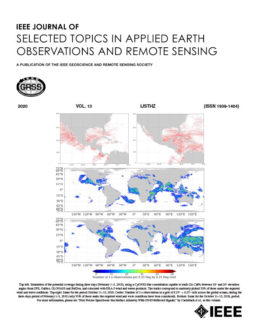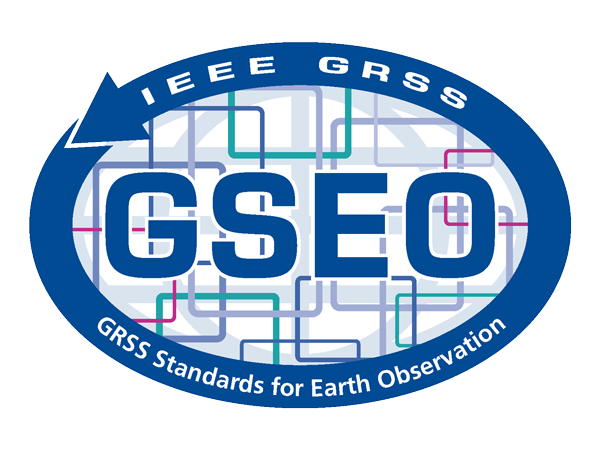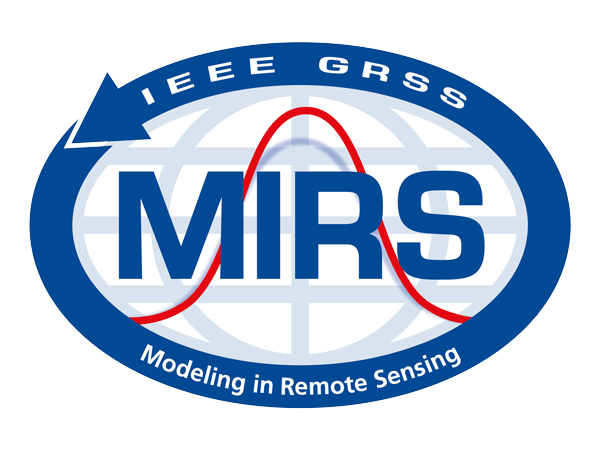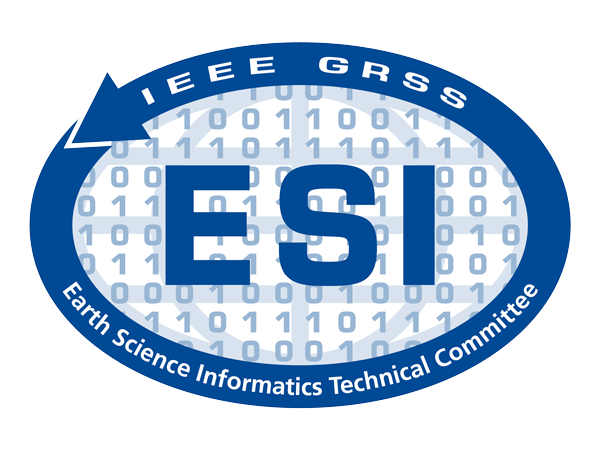HDCRS Summer School 2021
 Welcome to the summer school organized by the High-Performance and Disruptive Computing in Remote Sensing (HDCRS) Working Group. HDCRS is part of the IEEE Geoscience and Remote Sensing Society (GRSS), in particular of the Earth Science Informatics (ESI) Technical Committee.
Welcome to the summer school organized by the High-Performance and Disruptive Computing in Remote Sensing (HDCRS) Working Group. HDCRS is part of the IEEE Geoscience and Remote Sensing Society (GRSS), in particular of the Earth Science Informatics (ESI) Technical Committee.
This school is the perfect venue to network with students and young professionals, as well as senior researcher and professors who are world-renowned leaders in the field of remote sensing and work on interdisciplinary research with high performance computing, cloud computing, quantum computing and parallel programming models with specialized hardware technologies.
Lecture topics and instructors
Learning outcomes
- HPC requirements and best practices in EO Basic EO data systems and tools architectures
- Introduction in quantum information
- Physical implementation of quantum computers: basics and state of the art
- Quantum resources: the potential for EO
Lecture content
From its very beginning the field of Earth Observation (EO) became a driving force for the data processing, storage or transmission. During the last decades satellite and airborne sensors are collecting and transmitting to receiving stations several terabytes of data every day. With the increasing spatial resolution not only the data volume is growing, but also the image information content is exploding. This became a challenge for the data exploitation and information dissemination methods: how to enlarge the usability of the millions of EO images acquired and stored in archives to a larger user community.
The lecture will overview the computational requirements emerging from the EO technology and applications. The basic computer architectures will be introduced and explaining their evolution related to the EO particularities. Examples will be provided for multispectral and Synthetic Aperture Radar (SAR) data, encompassing the chain from the Payload Ground Segment data preprocessing, data distribution systems, EO data platforms to specialized AI tools. The presentation will continue with the basics of quantum information processing and physical principles of the quantum computers. The today most popular quantum computing resources will be comparatively overviewed analyzing their potential impact in EO data analysis. The lecture will introduce elements of quantum machine learning and their perspectives. The field of secure communications will also be introduced in relation to EO technology. Finally, the lecture will discuss the future impact of quantum imaging for space applications.
The Instructors
Prof. Mihai Datcu


Learning outcomes
- Concepts of heterogeneous computing: modern heterogeneous architectures and programming models supported
- Evaluation of scalability and speedup on GPUs
- Bottleneck detection with profiler tools
- Programming on GPUs/accelerators with standards such as OpenMP and OpenACC
Lecture content
The lecture starts with a revision of heterogeneous parallel architectures. The heterogeneous systems are nowadays used to improve the performance rates focusing on an energy efficiency not adding same type of processors, but including coprocessors. The well-known Graphic Processor Units (GPUs) is the most used coprocessor although there exists among others FPGAs or the neural processors. GPUs were initially designed for 3D graphic rendering but due to the large number of vector units inside them, allow speeding up intensive computations. Although these types of devices offer more FLOPS than the general purpose CPUs, their programmability is one of the challenges that are still present. The GPU’s manufacturer NVIDIA has promoted the CUDA programming model, which has managed to popularize these types of devices, despite the fact that CUDA only runs on NVIDA GPUs. Other initiatives such as OpenCL tries to favor the migration and portability between other types of manufacturers such as Intel, AMD or ARM but still suffers from the overhead in the code development and maintenance.
The lecture will continue with a revision of modern accelerators and their programming model and an overview of the main use cases and possible drawbacks. The GPUs programming task is addressed by means of the OpenACC programming model. OpenACC allows to express in a more friendly way than CUDA or OpenCL the code sections to be offloaded on the accelerator. This programming task is carried out by means of directives, which allows to express the kernels or code sections to be run on the accelerator as well as the amount of information to be transferred between the host and device. During a practical session, attendants will analyze and evaluate the parallel performance of OpenACC by means of profiler tools.
The OpenMP programming standard is then addressed. The well-known OpenMP standard was proposed in the late 90’s to express parallelism in a multiprocessor based systems by means of directives. Among its successive evolution can find the support for accelerators from its 4.0 version. OpenMP allows the development of parallel codes not only in NVIDIA GPUs but it is currently also supported by other types of accelerators such as integrated and discrete GPUs from Intel or AMD, or the recent announcement by Intel of the powerful Ponte Vecchio GPU.
Finally, OpenMP or OpenACC will be used to implement a whole algorithm to tackle a particular application from remote sensing. Any of the directives (showed in theory) will be applied to get a significant acceleration factor compared to the serial version in C programming. During this example, profiler tools will be used to get the best possible performance.
The Instructors
Prof. Sergio Bernabé García


He has been a Visiting Researcher with the Institute for Applied Microelectronics, University of Las Palmas de Gran Canaria, Las Palmas, Spain, and also with the Computer Vision Laboratory, Catholic University of Rio de Janeiro, Rio de Janeiro, Brazil. He was a Post-Doctoral Researcher (funded by FCT) with the Instituto Superior Técnico, Technical University of Lisbon, Lisbon, Portugal, and a Post-Doctoral Researcher (funded by the Spanish Ministry of Economy and Competitiveness) with the Complutense University of Madrid (UCM), Madrid, Spain. He is currently an Assistant Professor with the Department of Computer Architecture and Automation, UCM. His research interests include the development and efficient processing of parallel techniques for different types of high-performance computing architectures.
Dr. Bernabé was a recipient of the Best Paper Award of the IEEE JOURNAL OF SELECTED TOPICS IN APPLIED EARTH OBSERVATION AND REMOTE SENSING (JSTARS) in 2013 and the Best Ph.D. Dissertation Award at the University of Extremadura, Cáceres, in 2015. He is an Active Reviewer of international conferences and international journals, including the IEEE JSTARS, the IEEE TRANSACTIONS ON GEOSCIENCE AND REMOTE SENSING (TGR), and IEEE GEOSCIENCE AND REMOTE SENSING LETTERS (GRSL).
Prof. Carlos García Sánchez


Member of several competitive national research projects known as CICYT since 2000. Member and head of several projects linked with enterprise, which more relevant results are some productive software to predict and avoid river flooding. Regarding publications, he is the first and second author of several articles in relevant international journals and conferences. Author of more than JCR 25 publications and several conference papers. He has also been editor of two Special-Issues in indexed journals.
Focusing in his teaching task, he has mainly taught subjects regarding “Operating Systems”, “Computer Architecture Introduction”, “GPUs and accelerator programming” and “High Performance Computing” in the degree and master curricula in UCM.
Learning outcomes
- Setting up a cloud computing environment
- Preparing ML data training data
- Developing, evaluating and deploying ML models
- Performing model inference on new data (put model in production)
Lecture content
Machine Learning (ML) is not just about finding the right algorithm and creating a model. It is about the entire end to end lifecycle. The ML lifecycle includes four phases: problem definition, data collection and analysis, model development and evaluation, and deployment to a production system. The availability of open Earth science data offers immense potential for ML as evident from numerous research publications lately. However, many of these publications are not ending up as production applications mainly because the data scientists who develop the ML models are now expected to deploy and scale the models in production. Since more and more remote sensing data are being made available in cloud computing environments, scaling and deploying the ML models can be streamlined using cloud backed services.
This lecture will introduce ML lifecycle to the participants and demonstrate end-to-end remote sensing ML application from data preparation to deployment using a cloud computing environment.
The Instructors
Dr. Manil Maskey


Iksha Gurung


Shubhankar Gahlot


Shubhankar Gahlot


Drew Bollinger


Organizers
- Chairs of HDCRS (Gabriele Cavallaro, Dora Blanco Heras, Zebin Wu)
- Simulation and Data Lab Remote Sensing (University of Iceland)
In cooperation with and sponsored by














Information overview
- Date and time
Starts 31 May 2021 15:00
Ends 3 Jun 2021 18:30
Europe/Berlin (CET)
- Registration
Registration start date: Monday 01 March 2021 Registration end date: Monday 15 April 2021
Participation is free of charge. For the first 30 registrations, we will provide special accounts for accessing computing resources to be used during the practical sessions. The rest of the attendees will be able to participate as viewer only.
- Contact and Support
Contact person: Dr. Gabriele Cavallaro
Email for questions: g.cavallaro@fz-juelich.de
- Venue
This school will take place as an online event. The link to the streaming platform will be provided to the registrants only.
- Recordings
The lectures will be recorded and made available online through the GRSS YouTube channel.
- Slides and other material
Download the course material here:
get slides
Register to attend
Registration for 2021 is closed.
Agenda
Monday, 31 May
Speakers: Jón Atli Benediktsson, Gabriele Cavallaro
15:00 – 15:10
Preliminary information
15:10 – 15:25
Opening of the Summer School
15:25 – 16:10
Work and activities of HDCRS
16:10 – 17:00
Q&A and social
Tuesday, 1 June
Speakers: Mihai Dactu
14:00 – 16:00
From HPC to Quantum paradigms in Earth Observation (part 1)
Break
16:30 – 18:30
Wednesday, 2 June
Speakers: Sergio Bernabé García and Carlos García Sánchez
14:00 – 16:00
Break
16:30 – 18:30
Thursday, 3 June
Speakers: Manil Maskey, Iksha Gurung, Muthukumaran Ramasubramanian, Shubhankar Gahlot
14:00 – 16:00
Break
16:30 – 18:30























